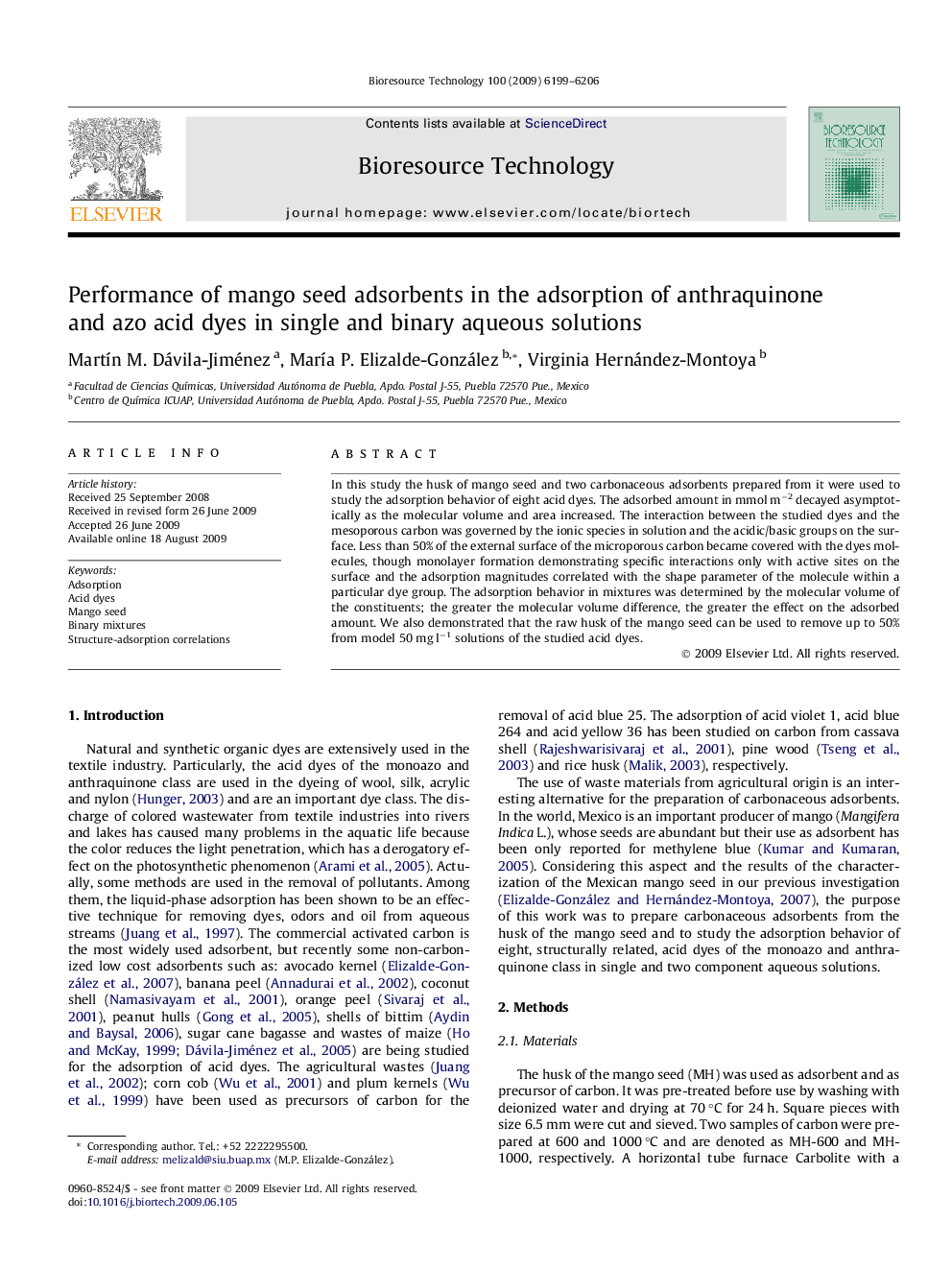| Article ID | Journal | Published Year | Pages | File Type |
|---|---|---|---|---|
| 683416 | Bioresource Technology | 2009 | 8 Pages |
In this study the husk of mango seed and two carbonaceous adsorbents prepared from it were used to study the adsorption behavior of eight acid dyes. The adsorbed amount in mmol m−2 decayed asymptotically as the molecular volume and area increased. The interaction between the studied dyes and the mesoporous carbon was governed by the ionic species in solution and the acidic/basic groups on the surface. Less than 50% of the external surface of the microporous carbon became covered with the dyes molecules, though monolayer formation demonstrating specific interactions only with active sites on the surface and the adsorption magnitudes correlated with the shape parameter of the molecule within a particular dye group. The adsorption behavior in mixtures was determined by the molecular volume of the constituents; the greater the molecular volume difference, the greater the effect on the adsorbed amount. We also demonstrated that the raw husk of the mango seed can be used to remove up to 50% from model 50 mg l−1 solutions of the studied acid dyes.
